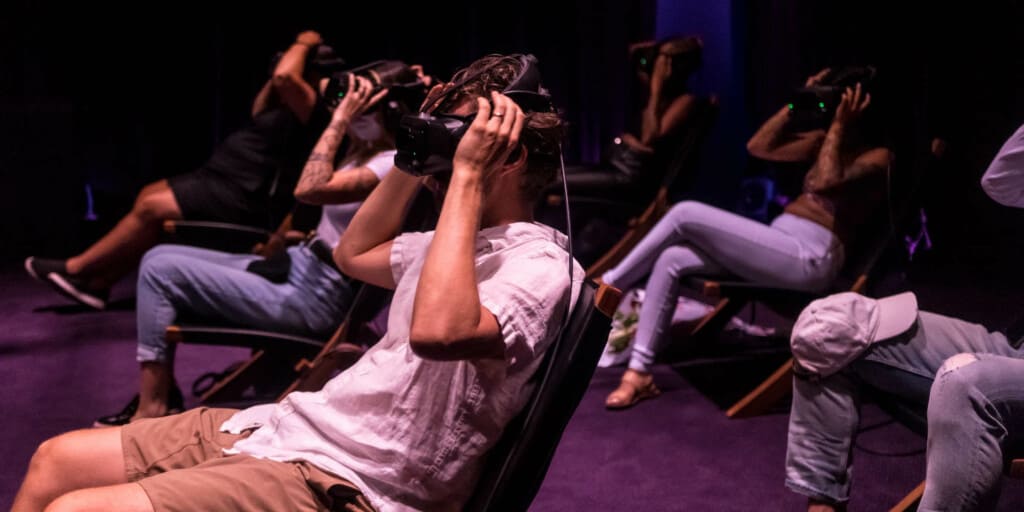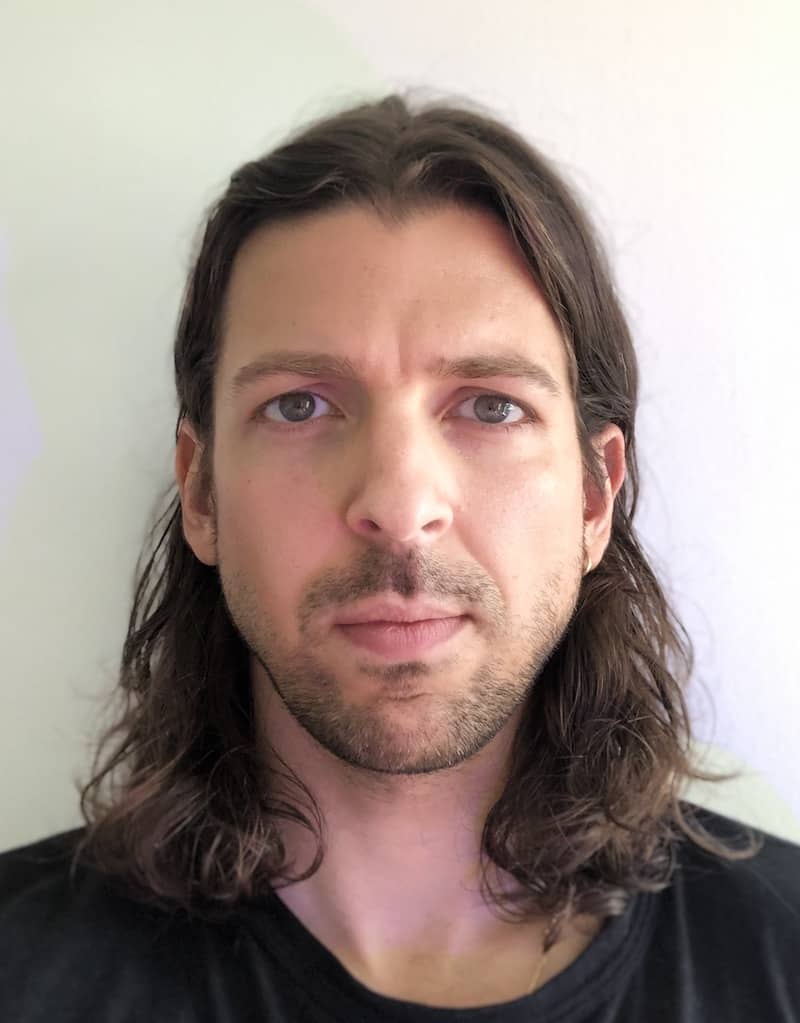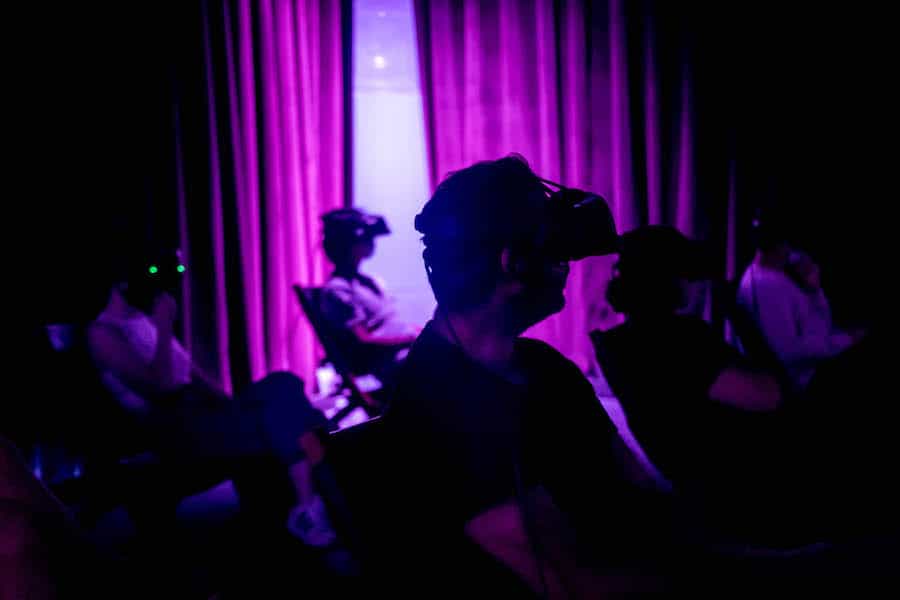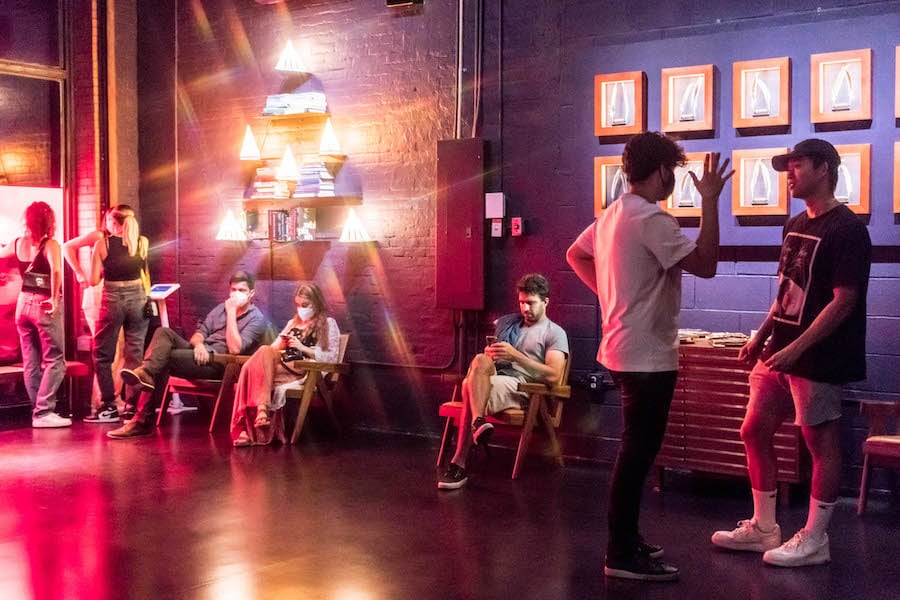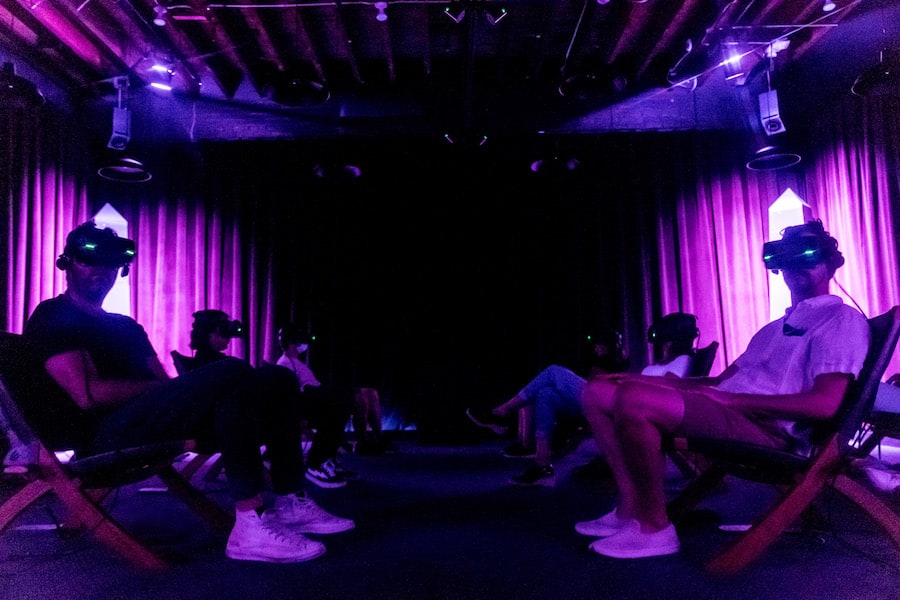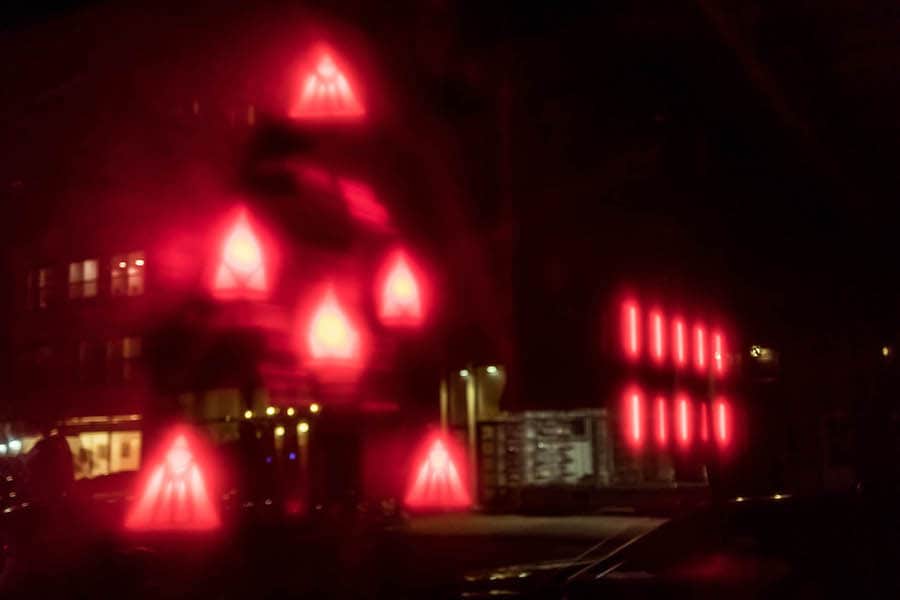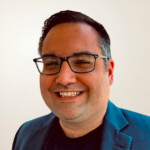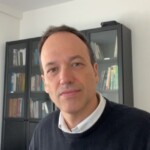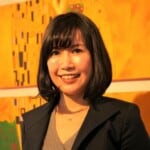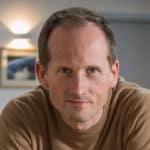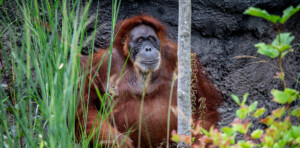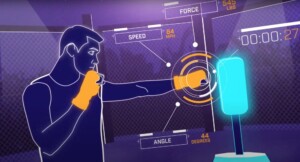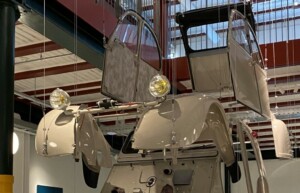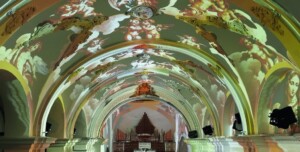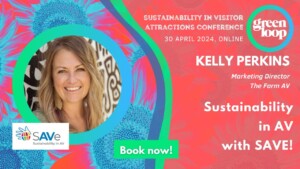David Askaryan’s virtual reality experience, Museum of Future Experiences (MoFE), elevates VR to a whole new level. A fusion of technology, immersive theatre and pop-psychology, the result is reminiscent of 60s-style experiments with psychoactive substances.
Askaryan, who has an MBA from Harvard Business School and graduated from the University of Florida with A BSc in Industrial Engineering and Mathematics, saw in VR potential that was unfulfilled.
He envisaged a use incorporating fluid storytelling, interactive imaginative flights, and a curated experience using immersive theatre, VR, and a state-of-the-art speaker system enabling 360-degree soundscapes.
The result is media startup MoFE in New York. This is both an immersive space and a production studio for a new type of immersive storytelling.
A fascination with immersive environments
“My background is not very linear,” Askaryan tells blooloop. “I’m a broadly curious person. I’m interested in how the world works and I’m interested in creating things.
“I’ve done everything from working at engineering firms to being in finance, to working on experimental theatre projects, to being a touring musician – in no particular order. Now, I’m doing Museum of Future Experiences.”
Askaryan, who had an active background in the arts and creative space, had been working as a product manager for Bridgewater Associates when he became aware there was a greater potential for VR in terms of fluid storytelling than was being realised by the market.
“I’ve always been really interested in immersion, and creating immersive environments that change people’s mindset and perspective,” he says:
“I have found that it leads to a kind of introspection or even, potentially, transformation, at least in the moment, that is meaningful and that stays with you. VR, specifically, caught my imagination, and about seven years ago I started experimenting with it. I built my own simulations just for fun. I built this one little VR simulation that induces out-of-body experiences in people.
“It just grabbed me as a platform that could really create interesting momentary radical perspective shifts. I’ve been tinkering around with it ever since then.”
The potential of VR
There have been, he explains, several waves of VR over the last decades. Previously, the fact VR didn’t really take off was because of technical reasons:
“With this particular wave, I feel we have been slow, as a community of creators for this platform, to understand that this is really a totally new medium and that we ought to approach it that way and think about, from first principles, what the standards of creation should be for this, instead of just trying to adapt standards of creation from something like film.”
“We’re just getting a better mousetrap, instead of exploiting what could be something completely new and magical.”
He adds:
“I think that light bulb is slowly starting to go on for creators. We are starting to see that use of the medium, where for the past four or five years the non-video game part of VR has been like watching standard films, but in a 360-degree format.”
Museum of Future Experiences
Askaryan describes the MoFE experience:
“The experience starts with buying a ticket online. You pick a particular time that you want to come, as it’s a timed show. When you get there, it’s a nondescript brick building in the middle of Williamsburg. It is a little mysterious, mostly blacked-out with a thin, red, transparent film that you can kind of see through, but not really.
“You open the door and are greeted by one of our hosts. Your tickets are checked, and you are given a pamphlet that tells you a little about the show. Then you are kind of left to your own devices to explore the lobby until the show starts.”
The lobby is meant to be explored, and to stoke the imagination:
“There are shelves to open, and a curated little library of books to look at. It’s up to you to ponder why we picked those books; maybe they are hints about what you’re about to see. There are kinetic sculptures and art to look at.
“Once it’s time for the show to start, the host comes out to the lobby. They gather everyone around, and give them an introduction to the show, explaining conceptually what the audience is about to see. Guests are then led through this long hallway that has a forced perspective effect; it gets narrower and narrower.
“At the end, you go through a door into the theatre, which is a box with curtains on all four walls, and sixteen chairs.”
A memorable experience
Apart from the 9-foot speakers, part of the state-of-the-art Ambisonics speaker system, designed to create a 360-degree sphere of sound effects, music and voices around the listener, there is little technology on view within Museum of Future Experiences.
Askaryan says:
“It’s very simple. It’s not flashy. You sit down, you’re given brief instructions on how and when to put the VR headset on, and then the host leaves and the lights go off. All of a sudden everything starts transforming.”
Concealed lighting springs into effect, and the speaker towers start playing music, soundscapes or stories.
“You put on the VR headset for certain parts, and are taken even more deeply to an altogether different layer of reality,” he says. “That’s the core of the show. It’s like Willy Wonka’s glass elevator; this little box you sit in just transforms and takes you all sorts of places.”
The show ends about an hour later. A different curtain opens on the other side of the theatre, and guests are led out.
“That curtain very literally opens the proverbial veil,” he says. “You get a little peek at how all the technology actually works. And then we send you on your way.”
Museum of Future Experiences can be experienced in a variety of ways says Askaryan:
“We have a lot of people that come alone. We have a lot of pairs, and then many people come in groups. It can be experienced in any of those combinations, and be a memorable experience.”
Pop psychology at Museum of Future Experiences
Museum of Future Experiences has multiple shows, so the experience is repeatable:
“People could come to the first show and like it, and want to see more MoFE-type content, so they’ll come to the second show.
“One show began with a questionnaire that everyone would answer; strange, pop Freudian questions. We would ask people about their biggest fears, their biggest desires. This questionnaire let us create a little psychological profile, pretty instantly, of each customer.
“It’s pop psychology, of course; part of the game and not real, but depending on that profile we would show a very different VR experience. People didn’t necessarily know that going in. Coming out, the conversations that would emerge, even amongst total strangers, were really interesting.
“Someone might say something like, ‘Wasn’t that crazy? I saw a dead ancestor…’ Someone would say, ‘What are you talking about? I went up into the cosmos.’
“People would quickly make the link that the questions were linked to their experience. Then all of a sudden there would be strangers asking each other what their biggest fears were, how they answered what their biggest desires were. And people did come back, to see what happened when they answered the questions differently.”
That particular show provoked conversations that are unusual between strangers, continuing the experience beyond its physical confines.
He adds:
“There were times where complete strangers would get into such interesting conversations we would have to interrupt them, unfortunately, because the next show was about to start.”
Storytelling and immersive theatre
In terms of where Museum of Future Experiences sits in the immersive experience spectrum, Askaryan says:
“At the end of the day, we’re just a bunch of creators and scientists and engineers who create meaningful experiences that touch us. To some, it mirrors something in the immersive theatre world; to others, it’s something totally different; either one is fine.”
Commenting on the artistic drivers in terms of concept and storytelling, he adds:
“We don’t do a lot of traditional storytelling. Instead, we are trying to create a certain state of consciousness in people. One of our experiences, for example, starts off with a group visualisation where all the lights go off. You’re asked to start imagining a structure we want you to build in your head, something like an internal temple, or to imagine what your childlike self looks like.”
“Having established those, let’s say psychic objects, those become plot devices or characters in the experience that we use later on. There is some traditional storytelling, but we’re also trying to create states of consciousness, feelings; to make you feel something that you’ll remember.
“We draw on a lot of psychology, we draw on the teachings of interesting philosophers and gurus, we draw on the phenomenal. We love things that are fantastic in nature, things that are wondrous. That could mean everything from nature to psychedelic-inspired experiences.”
Museum of Future Experiences is using VR very much as psychedelic drugs were used in the past to explore states of consciousness.
Expanding Museum of Future Experiences
Touching on plans for expansion, he explains:
“We create these shows and we distribute them through our venues. Right now, we have one venue in Brooklyn, then we do popups and installations. Every time we create a new show, because it’s largely digital, we have the capacity to press a button and upload it to a new venue. We don’t have to rebuild a set, or anything like that.
“What we see happening is building a MoFE venue in every major city around the world. For instance, MoFE London, MoFE Berlin, MoFE Tokyo, MoFE LA. Having built out that infrastructure at the brick-and-mortar level, we would then continue making a lot of shows.”
“Every time we make a new one, it uploads to one or to a thousand venues, so MoFE becomes this new thing, that is woven into the cultural fabric. It is something that people could go to over and over again, to see new shows.
“That’s one side of it. The other side of it is that we are going to build out an online platform and have a MoFE channel people can subscribe to. So, people will be able to consume some of this content at home if they have a VR headset. It’s not going to be the same thing, but it’ll be very cool, and it’ll be very interesting.”
Online productions
As far as the timeline is concerned, he says:
“The idea was always to build a bunch of venues, develop all this IP, and then flip online. Because, initially, there just wasn’t a critical mass of VR headsets out in the consumer market. However, that’s changing now.”
“The latest numbers on headsets sold over the past year show that we are getting there sooner than I thought. We are working on our third full production show right now, which we are going to release at the venue.
“As soon as we release it at the venue, we’re going to make a few changes necessary to convert it to an online experience. Then, we plan to release our first online experience in 2022.”
